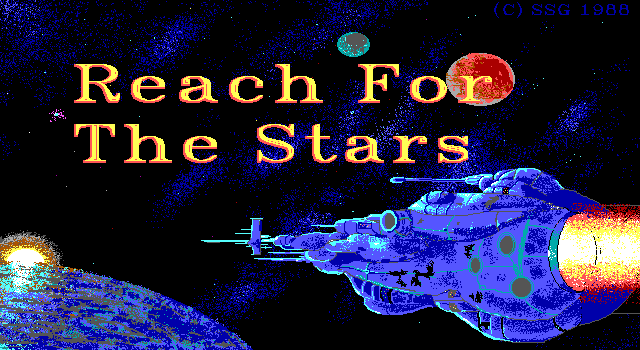
Reach for the Stars by Ian Trout and Roger Keating, published by SSG, Australia
First release : July 1983 on Apple II,
Tested on : AppleWin II emulator and MacIntosh emulator
Total time tested : 14 hours
AAR: Standard ruleset, Advanced ruleset
Average duration of a campaign: 4 hours for 60 turns
Complexity: Average (2/5)
Would recommend to a modern player : Yes
Would recommend to a designer : Yes
Final Rating: Good
Ranking at the time of review : 1/75
Mes pareils à deux fois ne se font point connaître
Et pour leurs coups d’essai, veulent des coups de maître
Immediately after having finished Operation Apocalypse, Roger Keating had returned to Australia, working on Southern Command and later on Germany 1985. Before mailing his versions from Australia to California, Keating needed local testers. He found one in the manager of the Napoleon Military Bookshop, a place where Keating loved to hang around as the “Bookshop” was also selling tabletop wargames and hosted the kind of battles where counters replace tanks and infantry divisions. Alas, the “Bookshop” was not profitable, and in early 1981 the owner put Ian Trout in charge, counting on the latter’s better financial acumen.
A teacher just like Keating, Trout found a game in almost everything. “Almost everything” included the stock market, and before 30 Trout had earned so much playing that specific high-stake game that according to Keating he could have retired if he wanted to. Alas, the days are long when you are retired and your sparring partners are not. Trout found the idea of managing the Napoleon Military Bookshop enticing : he could play as much as he wanted, and read military books between sessions and customers. This busy schedule did not stop him from turning around the financial performance of the Military Bookshop and wiping off its debt in less than 3 years.
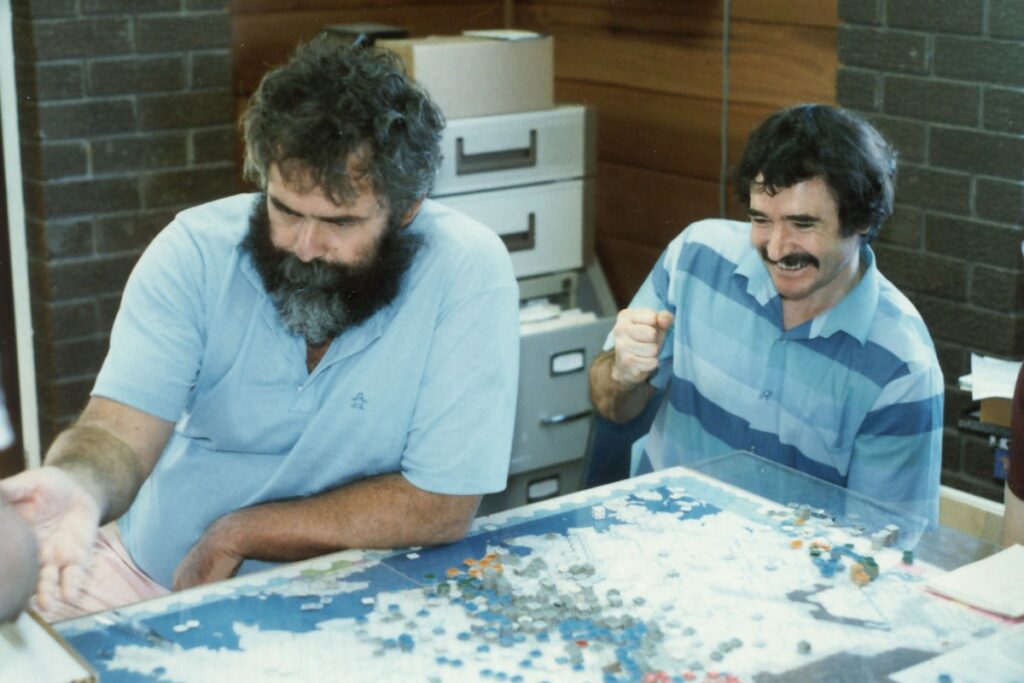
One of the regular customers was of course Keating. Always a good talk for new game systems, Keating also had this quaint interest in video games. For Trout, as Keating recalls, video games were “garbage“, as they did not deliver the visual immersion offered by tabletop games. But technology marches on, and examining video games as a market Trout realized three things : that video games improved with every release, that the video market expanded every year and that he was routinely talking to one of the very best developers on the market. There was an opportunity to do something both fun and profitable : designing games, having someone do the tricky coding part, and make money out of that !
For his part, Keating was not satisfied with his position as an external developer for SSI. The royalties were meagre, and he realized that he either had to go big – start his own company – or go home – return to teaching. Keating also knew he was not a businessman, so the prospect for the former was narrow, or rather it was until he had met Trout. As Keating saw it, Trout had golden hands, turning everything he touched into a prosperous business. Alone in Australia, Keating had also realized he was more of a “game program designer” than a “game designer” and had done some of his best work when under Joel Billings’ design supervision for Operation Apocalypse. On this topic as well, Trout could deliver.
And so, by the middle of 1982, Trout finally accepted what Keating nagged him to do : Trout would handle the operations and, critically, design whatever he wanted – and Keating would do all the coding. Strategic Studies Group (SSG) would only be incorporated in early 1983, but its history started that day. Later, there would be new rules, including a veto power of Keating on any feature for which no satisfying AI could be designed.
For now, Keating still had promised two more games to SSI, and Trout had a store to manage. This may be why, instead of designing a game from the ground up, Trout chose to port a game he liked : Stellar Conquest.
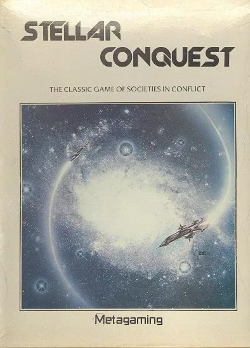
Metagaming Concepts’ first game, Stellar Conquest was a ground-breaking board game and probably the first tabletop 4X. An instant success, it kickstarted Metagaming Concepts overnight into a significant player of the boardgame industry. This position was soon reinforced by further great calls, including the publication of The Space Gamer (1975), the choice of a young student called Steve Jackson as a freelance designer and the new concept of microgames, small games with simple rules packed in Ziploc bags and sold for $2.95. Those games could have been just that – small games – and their innovative format would have ensured they were a profitable endeavour already, but microgames turned out to be more than that. The first of those microgames had been designed by Jackson : Ogre (1977) and was an immediate success. Ogre was followed by other solid microgames, many designed by Jackson, particularly Melee (1977), a tactical combat game successful enough to serve as a basis for Metagaming’s RPG : The Fantasy Trip (1980) – the first RPG in which characters were created using a point allocation system and not the randomness of die.
Beyond its popularity, Stellar Conquest was a good choice for a computer port : while well-designed the game required significant accounting, and the rules were peppered with notes on how the game would be so much better if boardgames could allow secret moves. It was such a good choice that unbeknownst to Trout and Keating it had already been the subject of a first unofficial port by Avalon Hill : Andromeda Conquest. But doing a copycat was below Trout ; he wanted no less than to create the official port for Stellar Conquest, and soon managed to secure the rights with Metagaming Concepts.
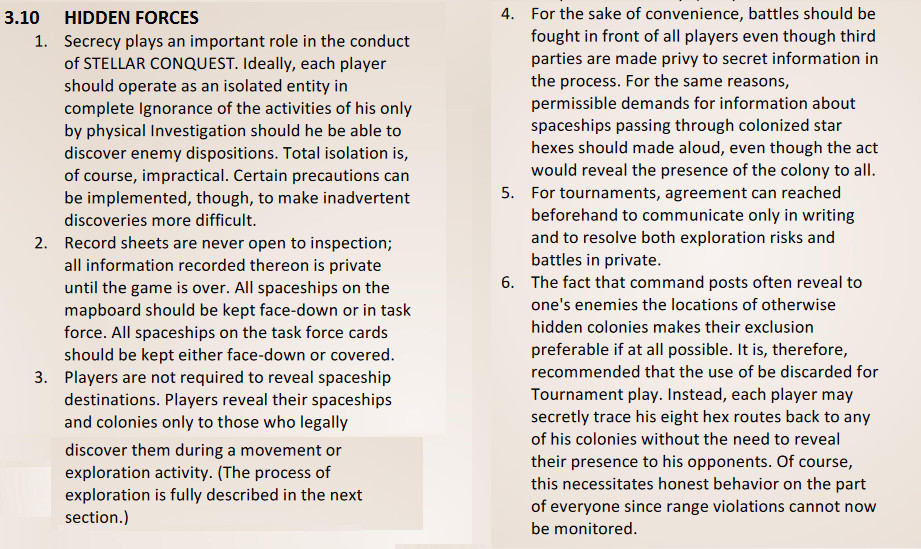
Trout did not seem to have realized that Metagaming Concepts was crumbling already. Jackson had stopped working for the company in 1980, taking with him The Space Gamer, and Metagaming Concepts never managed to replace either. Worse, the microgames format had been copied by pretty much every single board game company (famously in the case of SPI at an operating loss), and by April 1982 Metagaming Concepts laid off its remaining designers. Critically for SSG, the rights for Stellar Conquest were sold to Avalon Hill.
This wrecked Trout’s initial plans. Metagaming had no video game activity, but Avalon Hill had Microcomputer Games, and requested to handle the production and distribution of any Stellar Conquest game under that label. Not agreeable to the Australians, as Trout wanted SSG to be its own publisher. Well then, Reach for the Stars would not be a Stellar Conquest port. SSG’s game was modified to remove anything that could trigger a copyright issue, and the production was launched in Trout’s garage, using local kids as workforce. Frustrating, but it paid off.
Reach for the Stars was an immense success, with according to one source more than 60 000 copies sold for the first edition alone. For reference, the most successful SSI game up to that point, Computer Baseball, sold roughly 45 000 copies in the US over its shelf-life (1981-1987), and none of the SSI wargames I covered so far passed the 20 000 US copies threshold. The game received 3 editions (1983, 1985, 1988), and from its Apple II master was ported on most US platforms (Commodore 64, Amiga, MacIntosh, DOS) and even on PC-88 for Japan. All versions included, the same source claims that 300 000 to 400 000 copies were sold.
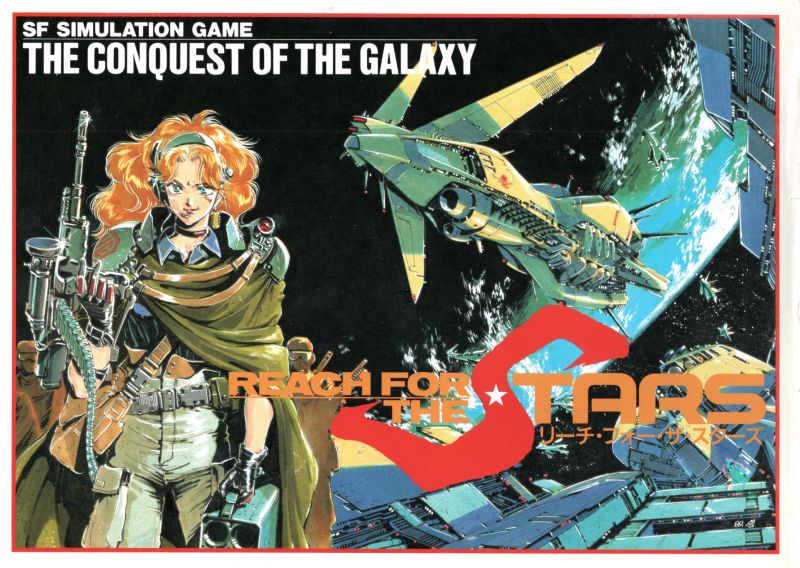
The various versions were almost identical in their default ruleset. Each edition improved upon the UI (the Data Driven Gamer did a screen-by-screen comparison of the three Apple II editions, so I don’t have to). The second edition also added a tutorial and optional features, while the third editions add even more optional features and of course the advanced mode I showcased.
After this particularly long introduction, let’s move to the ratings for the third edition. I recommend you check the standard ruleset AAR and the advanced ruleset AAR if you have not already.
There are very few articles on SSG available on Internet, and none of them discuss the beginnings of the company. For this reason and with some exceptions like Fiona Chatteur’s already linked article, the bulk of this introduction comes from discussions with Roger Keating on Discord. Unfortunately, Ian Trout passed away in 2011 so I will never have his side of this story. My source for the history of Metagaming Concepts is Designers & Dragons.
A. Immersion
Poor, and the first edition of the game was even worse. It is not a strong point of the game, the game lacks chrome (I wish there were alien races, more random events, etc…) but at least graphics never get in the way.
B. UI, Clarity of rules and outcomes
Quite good. UX has been a focus of SSG’s efforts for the reeditions of Reach for the Stars :
- The first edition could only be navigated by keyboard commands that were not always displayed on the screen and had no tutorial,
- The second edition could only be navigated by keyboard commands, but those were consistently displayed on the screen. The game include a tutorial enclosed in the inside of the game box,
- The third edition was fully menu-controlled, a much more comfortable option,
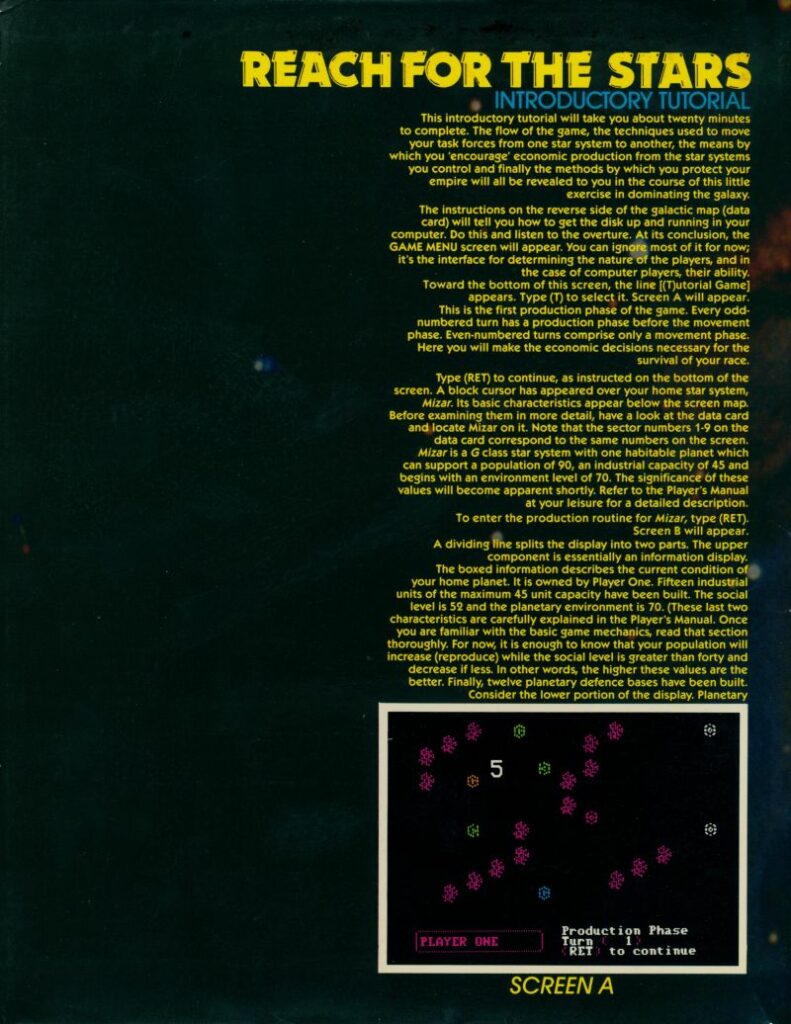
Generally speaking, the rules are well-explained and easy to grasp. The game has a high tolerance for mistakes, and you can change whatever order you gave during the turn.
I was on the other hand frustrated by how hard it is to track turn resolution and enemy actions :
- You see enemy fleets moving for half a second, including when they destroy your scout ships,
- Combats against local defences are resolved automatically and give you very little time to understand what is happening,
- There is no easy way to check who controls which planet, so you need to remember that last time you hovered over a specific world it belonged to this or that player.
Navigation on the galaxy map is complicated, and the strategic map is almost useless. Later 4X games would solve this by allowing to zoom in or out, but of course that’s not an option technologically available in the 80s.
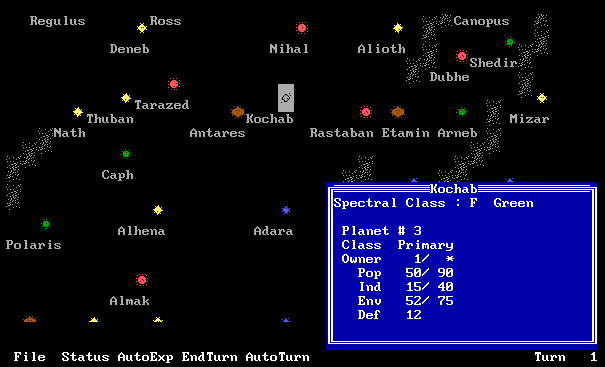
Not perfect compared to today’s standards, but solid for a game that did not use the mouse.
C. Systems
Very good. Reach for the Stars is not the first space 4X, but it is the first one that matters as it codified the typical 4X main loop :
- develop your planet and tech level,
- generate resources
- produce colony ships and ships to escort them
- colonize or conquer more planets
- back to #1 until final victory
Both Andromeda Conquest and Cosmic Balance II skimmed on the “develop your planets” part : in Andromeda Conquest colonized planets were immediately 100% functional, whereas in Cosmic Balance II the development was replaced by a tedious² colonization process and the “commerce net” feature.
Back to Reach for the Stars, taking the 5 steps one after the other :
- Develop your planet and tech level
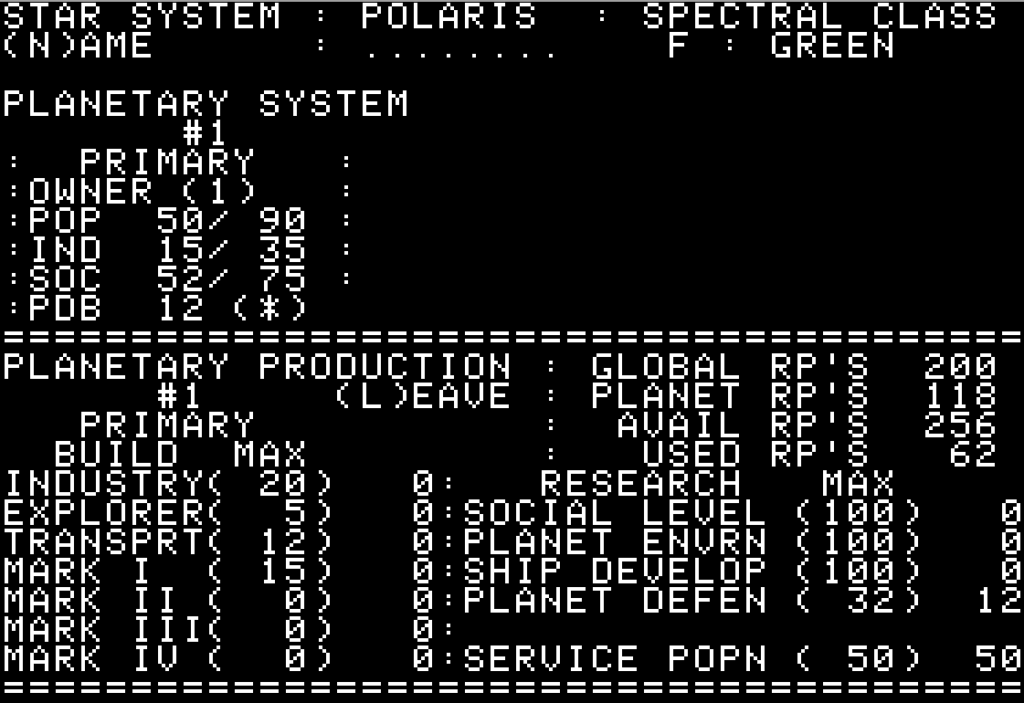
This first step is probably the most different from its equivalent Stellar Conquest. In Stellar Conquest, more population always produced more resources and had no drawbacks. Reach for the Stars on the other hand uses a complex formula which makes population in excess of industrial capacity both useless and costly, forcing you to build transports to ship the excess population off-world. I really dislike this feature as it makes you play very counter-intuitively (contemporary magazines gave you the tip to send off-world any population in excess of 30…). This was much improved in the advanced ruleset, where high population is now useful as it slowly increases industrial output.
Stellar Conquest also did technology much better, with 18 different techs, some of them giving you non-stat bonuses (eg “Unlimited Ship Communication” which allows you to change the destination of a ship while it is transiting) . The default Reach for the Stars ruleset had only 3 technology levels for the combat ship, the advanced ruleset added 3 for industry and 3 for navigation. Unfortunately, given the harsher economy of the advanced ruleset, you have to beeline for the first industry tech before doing anything else – even the manual tells you so – so that’s 9 turns where you don’t really take any decision.
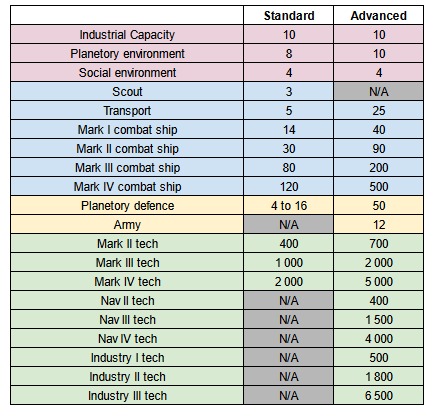
2. Generate resources
That’s another clear difference between Stellar Conquest and Reach for the Stars. The Stellar Conquest rules are clear : “A colony cannot combine with other colonies to buy items it could not afford on its own.” so if you want to support a planet the only solution is to transport migrants. I feel Reach for the Stars has superior design there : any production point not used can be allocated to any other planet in the next production phase, provided neither the “sender” nor the “receiver” are blockaded by enemy ships. This feature opens a lot of options.
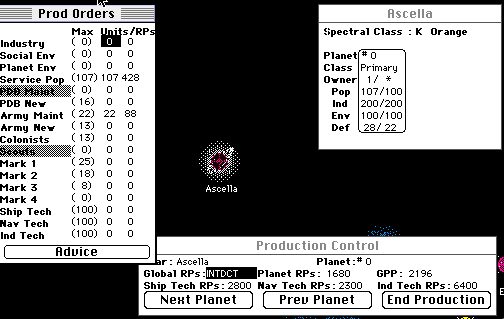
In the default ruleset, there is no limit to the amount of resources transfered, so in a long game you can reach a point where you push every turn one or several planets from “fledging colony” to “industrial center”. In the advanced ruleset, the maximum production of a planet depends on its population, so if you want to kickstart a planet in one turn you need to have previously transferred a massive amount of population – and keep in mind that transport ships are 5 times more expensive in this ruleset than in the default ruleset. Again, I much prefer the advanced ruleset there.
3. Produce colony ships and ships to escort them
I already said everything I wanted to say about production, so I will use this section to talk about combat. Alas, it is going to be short : I have no idea how combats are calculated in Reach for the Stars. What’s sure is that the difference of strength between the difference technologies is so huge that there is no reason to trade quantity for quality if a better tech is available. The designers of Reach for the Stars were also wise enough to cap the tech level of planetary defence to 3, which means that by endgame when mark IV combat ships are available no planet is safe.
4. Colonizing and conquering worlds
This is where Reach for the Stars and Stellar Conquest are the closest. Reach for the Stars even included a vestigial feature about “class of stars” each giving different probabilities for the planet-type. Given exploration is cheap and automatic, the feature is pointless.
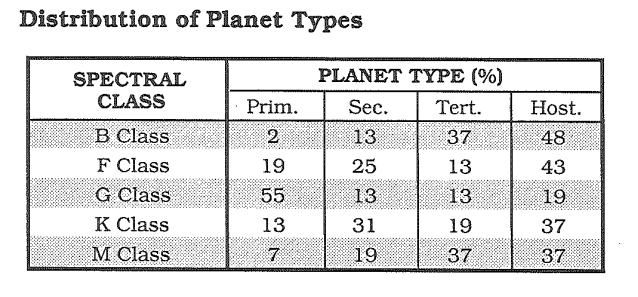
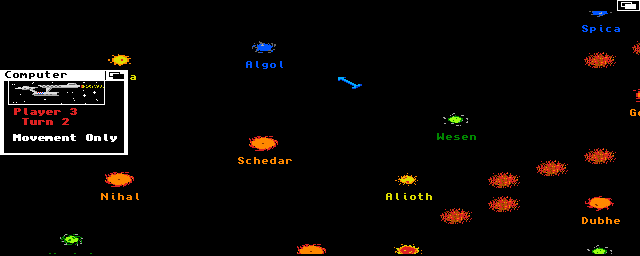
Not all planets are empty, and sometimes they need to be conquered rather than merely colonized. Once again, this works similarly in Reach for the Stars and in Stellar Conquest : first the player must clear the surrounding space, then they need to remove the planetary defence (“missile bases” in Stellar Conquest). Once this is done, conquest is over in Stellar Conquest, whereas in Reach for the Stars the player must land enough population (or armies in advanced ruleset) to seal the deal. Local population keeps its initial allegiance in both the video game and the board game, and it can be liberated at any time if its original owner comes back en force.
5. Winning the game
Stellar Conquest had a basic “control more planets than your opponents turn 44 to win“. Reach for the Stars wisely chose a more complex system, weighting development, destruction, bombardment and occupation of foreign planets. It is hard to describe how impactful those victory conditions are, but I really feel they turned a good game into a great game. Because you get fewer points each turn for a planet that was always yours compared to a planet you conquered, players cannot turtle and play defensively – they have to attack, and the sooner the better – and by turn 5 you will start to worry about your neighbours. The victory conditions also keep the game interesting until the end : points for controlling planets accrue every turn, so it is hard to catch back on that, but one decisive final battle with the sort of massive fleets you only see at the end of the game can give you hundreds of points and allow you to pass an opponent at the last moment. An impressive system.
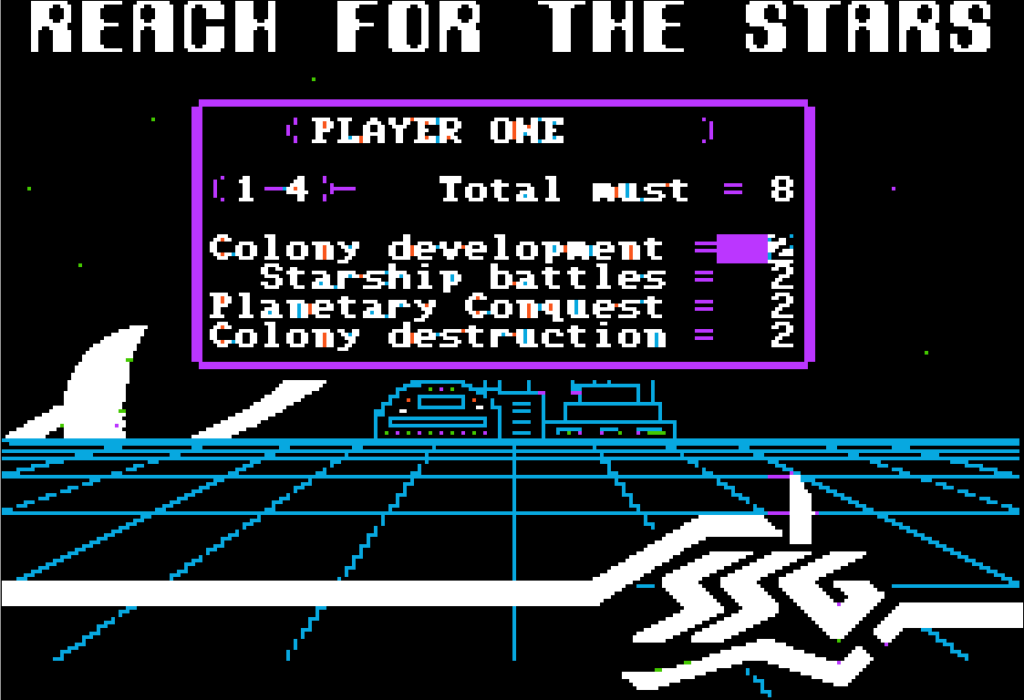
6. Conclusion on the ruleset
Reach for the Stars‘s ruleset has an impressive “depth-to-simplicity” ratio, and will make you take decisions every turn. Some players may have preferred a game with more alien races, more technologies, maybe with shipbuilding or tactical combat – but this is a matter of personal preference. What I feel everyone will miss is a diplomatic layer, even a simple one – after all I don’t imagine that players of Stellar Conquest remain silent while moving their fleets. Apart from that, the density of decisions is very high, and most flaws can be fixed by tweaking with the scenario balancing.
D. Scenario design and balancing
Very good. The first release of the game shipped with relatively few options, and I suspect most of the replayability came from the strengths of the ruleset (in which you could be attacked turn 5 or left alone almost until endgame) and the quality of the 4 AIs. The randomization is on the content of each system, some empty and some orbited by 3 rich primary worlds. This must be qualified though : in the default ruleset in which ships have infinite range, you will only be interested in primary worlds (cheap to develop, high production cap) and “hostile” worlds (expensive to develop, extremely high production cap) – the specifics of any other world will be irrelevant. In the advanced ruleset, because you sometimes need to colonize a world as a springboard for expansion, the randomisation has a much higher impact on the gameplay.
Later editions included a growing number of customisation options, which can be split into two groups :
- Rule changes, whose impact goes from marginal (“natural disaster”, I played a whole game with them and never noticed much of a difference) to massive (eg “hidden victory conditions” with which you have no idea who is leading on points or the “task force setup” where you start with colony ships rather than a planet).
There is an option to randomize the star map. I cannot recommend it. While random maps are default in modern 4X, you will lose the comfort of the paper map provided with the game in Reach for the Stars and have to rely on the subpar map navigation UI
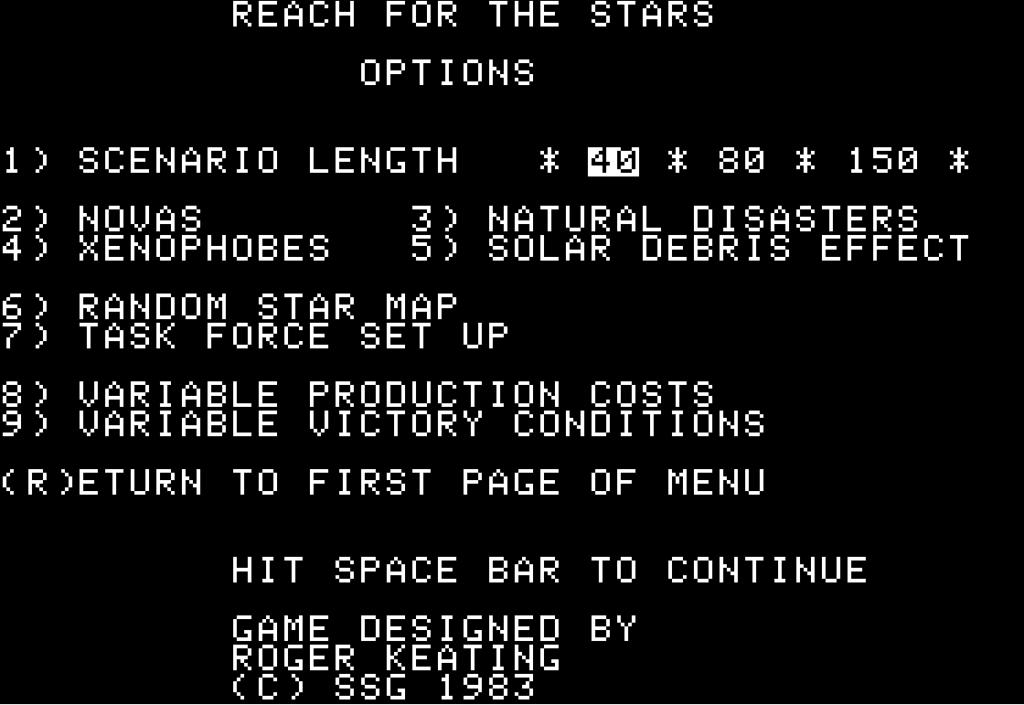
- Balancing changes, with their scope growing every edition. By the third edition, you can change the cost of research and production, the speed of the various ships and the victory conditions by player. Even though I did not use those options, the freedom is incredible. You can choose for instance to have your transports move by 1 hexagon by turn, or put the cost of the first level of industry tech at 1 in advanced mode to kickstart the beginning of the game.
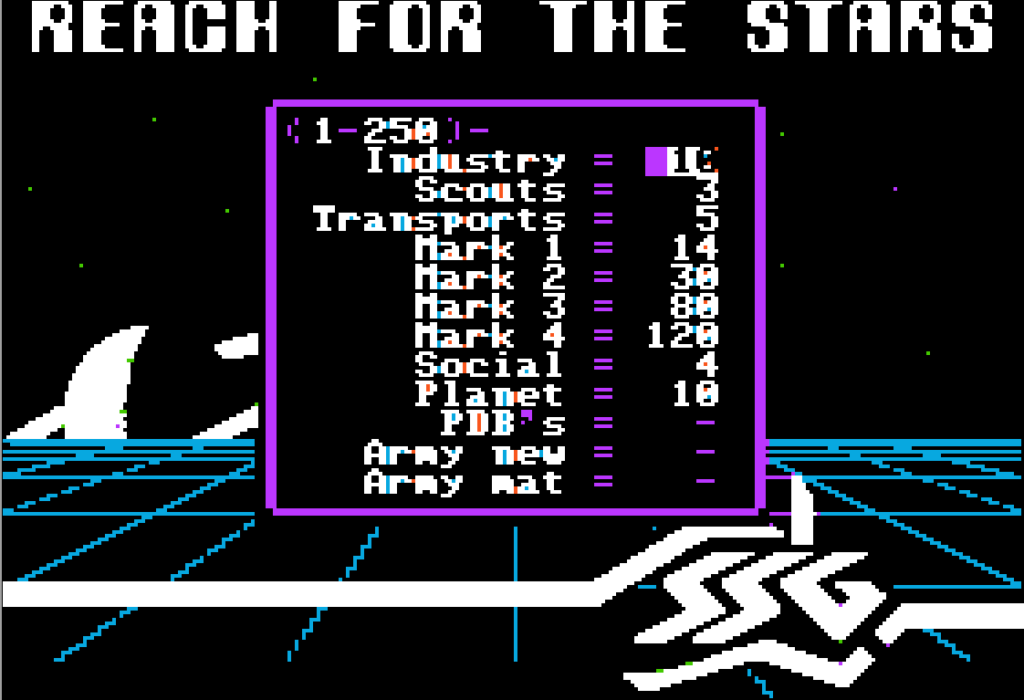
Finally, let’s mention the AI. It is excellent and fun to play against. I don’t know whether it cheats – if it does it is not obvious – but it feels very humanlike, focusing on the leading players and on factions against which it has a grudge. Again, the only missing feature is a diplomacy option with the AI, but no game had that in 1983.
E. Did I make interesting decisions ?
Yes, from the onset of the game for the normal ruleset from turn 20 or so for the advanced ruleset as well. The decisions to take were a bit different between the two rulesets.
In the normal ruleset, you have to take difficult decisions between growth and defence from the very beginning, as you can be attacked at any moment. On the other hand, it is very easy to “max” a planet, and the colonisation speed is capped by the maximum number of transport ships you can build. For this reason, by mid-game, the decisions are military ; given a flat ship production, where do I defend, where do I probe, and where do I push.
In the advanced ruleset, there are almost no interesting decisions at the beginning as the player must beeline for industry tech level 2 and if possible tech level 3. Militarily there are fewer targets within range and so fewer options, but they are more differentiated – taking a specific planet opens new specific options. Finally, slower economic growth and a deeper research system mean the player will have to take difficult allocation decisions almost until the end of the game.
I believe some smart choices on the customization options (very cheap research costs for the first industry tech and all the navigation tech) could allow to have the best of both worlds, but I have not tested this.
F. Final rating
Good (both rulesets, I think I liked the Advanced one marginally better). Reach for the Stars stops short of Very Good due to its lack of diplomacy feature and for being a bit too dry for my taste ; at its release given the rest of the strategy games I have no doubt the experience was outstanding, I would have spent hundreds of hours in front of that game.
It is by far the best game I have played so far for this blog. It is also the first one I wish I could test more but need to stop playing because I have to move on. Reach for the Stars is never tedious even when your empire spans many planets and it succeeds where so many 4X fail : it is fun at the beginning, it is fun in the middle of the game and it is fun during endgame. If I ever update Reach for the Stars‘s rating it will be upward, meanwhile if you are interested in the history of video games you should test it.
Contemporary Reviews
Reach for the Stars was received with near-universal acclaim. The game having received three editions and numerous ports, I don’t want to go through every review I found – I found a lot – but I will rather focus on the first batch, all in November 1983, as it is representative of the reviews I read.
Writing for Computer Gaming World, Ed Curtis explains that Reach for the Stars is a game “nearly devoid of anything to complain about (other than the viciousness of the Veteran level computer players). Reach for the Stars “offers features to be found in no other space game [with] great artificial intelligence and careful design […]. My only hope is that RFTS is soon followed by more games of the same quality.”
Steve Williams writing for Creative Computing, November 1983 does find a flaw : “The game seemed somewhat sluggish when I played against a friend and two computer opponents[…] Reach for the Stars, I believe, is best when played solitaire.” But when playing solitaire, Williams is aligned with everyone else and he praises the density of decisions just like I did : “I found Reach for the Stars absorbing and quite enjoyable. Because it required frequent decision-making, it maintained my attention and interest. My mind had little time to wander as it often does in other slow-moving strategy games”
Finally, Softtalk November 1983 reckons that “the game itself is beautifully designed. More than that, the “engineering” of the thing is lovely: You can do just about anything you want to with the system, from adding various hazards to the game universe to stopping a game in the middle and saving it on disk.“
Given its history with Metagaming Concepts, I feel like I also have to quote the Space Gamer‘s reviews. The first one was written by Norman Banduch in the May 1984 issue : “Reach For The Stars is a most addictive game. After playing 10 to 15 hours a week for several months I still find it hard to save the game and go home. It offers a wide variety of set-up conditions and victory conditions, and play is never the same. […] I cannot recommend it enough.” Almost 3 years later, in February 1987, Bob Ewald reviewed the second edition. The review is short and positive (“the game as a whole is great“), the article is mostly interesting for its tips.
Almost all reviews praised the deepness of the game, how fast it plays, how strong the AI is and how many options to customize your games there are. The only recurring complaint is about the documentation. Apparently, the manual for the first edition (now lost) was lacklustre and sometimes outright confusing.
Even abroad, Reach for the Stars was the game to play. In France, Casus Belli covered the game in October 1984, and the reviewer claims it is the best sci-fi computer game on the market, “even better than Cosmic Balance II”. In December 1986 the French magazine Tilt still describes it as “without any doubt one of the best sci-fi wargames”.
Reach for the Stars aged particularly well. In the May 1994 issue of Computer Gaming World, Evan Brooks lists all science-fiction games ever released and gives Reach for the Stars 4 little X-Wings out of 5 (the oldest game with that score by far), stating that it is “one of the best science-fiction games ever released” and “a product still worth playing“. Two and half years later, in November 1996, Computer Gaming World puts it in the 51st position in its list of greatest games of all time.
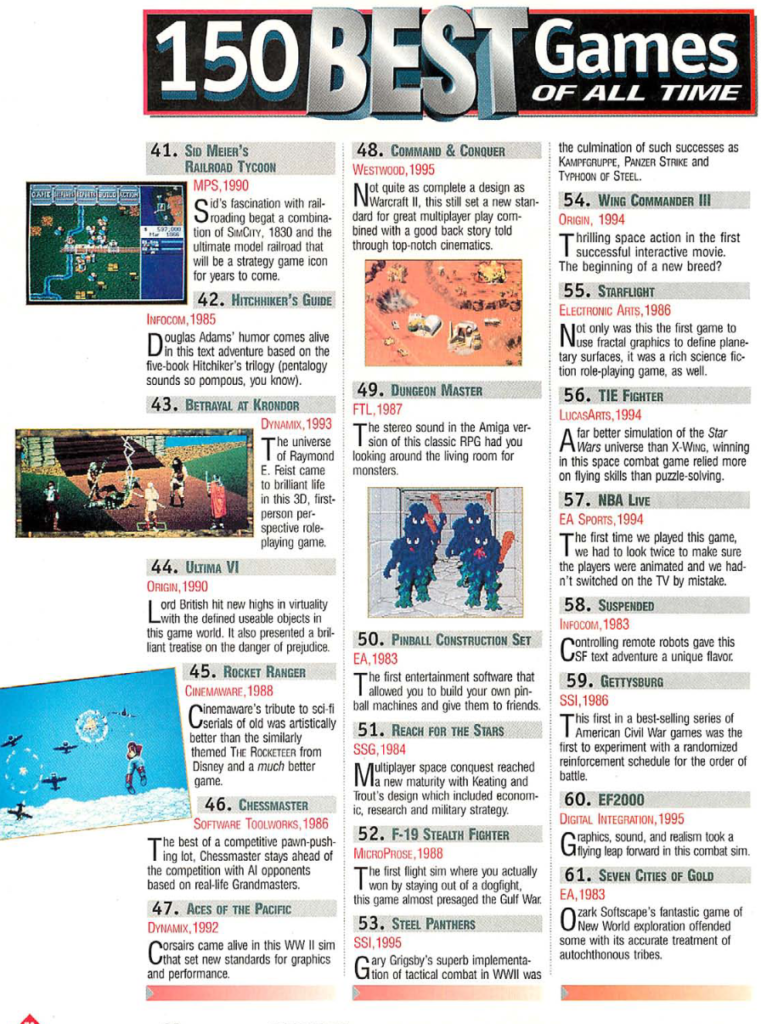
Reach for the Stars was not the first computer space 4X, but it was the first good (great !) one and it codified a large part of the genre. It opened the way for many other 4X (Imperium Galactum, Pax Imperia, Stellar Crusade, Armada 2525, …), which I will all cover in time. But of course, the one I am the most looking forward is Master of Orion in 1993 – it may be a while though. Before that, we have many more SSG games to cover, very few of them sending us into space.